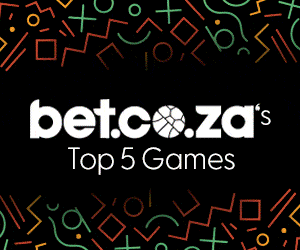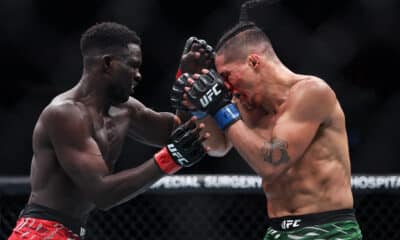
Coach Desiree Ellis and her team went into the tournament as favourites but ultimately failed in the knockout stage.
The reigning champions will now have to regroup and address some issues, including missed chances and defensive errors that came back to haunt them at crucial moments. However, this campaign was not defined by defeat as much as it was by grit, which points to a team that fought hard.
Let’s look at the numbers:
In six matches, Banyana scored nine goals, conceded five, and kept three clean sheets, maintaining possession for almost 59% of each game (an average of 57%). They passed the ball with 75% accuracy and completed 1,782 passes during the tournament.
Game 1: Banyana (1.57xG) 2-0 (1.3xG) Ghana
South Africa appeared most assured in the group stage, with their opening match against Ghana a 2-0 victory courtesy of goals from Linda Motlhalo and Jermaine Seoposenwe, with 55% ball possession and 289 passes completed. This fine performance was capped off by five saves from goalkeeper Andile Dlamini, who would later stamp her mark in the tournament. Banyana’s xG total of 1.57 in this game was a bit generous, given they were awarded one penalty (0.78xG) – it was a rather laboured performance despite the win.
Game 2: Banyana (1.73xG) 1-1 (0.7xG) Tanzania
Their second game, a 1-1 draw with Tanzania, highlighted the team’s ability to fight back. Before this tournament, Banyana did not have a good comeback record. They had fallen behind 22 times in WAFCON games, losing all but one of those games. So, this was a rare comeback in that context. Dominating possession with 63% and seven shots on target, Banyana were unlucky not to get three points, after Bambanani Mbane pulled one back to level the score and salvage a result.
Game 3: Banyana (1.73xG) 4-0 (0.37xG) Mali
The girls’ biggest win came against Mali – a resounding 4-0 victory that included four different goal scorers. Once again, Banyana had the lion’s share of possession (64%), completing 361 passes at an 81% accuracy. Once again, Dlamini made a crucial five saves to help keep the clean sheet. From the group stages, Banyana had seven points (the joint-most of all teams) and seven goals, and only one conceded goal, which in its own was a statement of intent. However, knockout football is unpredictable.
Game 4 (Quarter-Final): Banyana (0.86xG) 0-0 (0.47xG) Senegal
The quarter-final against Senegal became a chess match as South Africa once again dominated possession (57%) and completed 301 passes, but failed to convert in front of goal, with a 0-0 draw after extra time. That said, there was redemption at the end of it as Banyana finally put an end to their penalty shootout struggles, winning the contest 4-1 on penalties. Dlamini’s three saves in regular time and her calm presence during the shootout (two more saves) showed why she remains one of Africa’s best.
Game 5 (Semi-final): Banyana (1.12xG) 1-2 (1.3xG) Nigeria
The semi-final against Nigeria came down to fine margins: South Africa had 55% possession and a pass rate of 74%, but created just three shots on target – their joint-fewest in a game at the tournament. Linda Motlhalo (again) equalised with a penalty in the second half, but a late free-kick sealed a 2-1 win for Nigeria. There is always a sense of consolation in losing to the eventual champions, but Banyana just did not reach the performance heights we have to expect.
Game 6 (Third place Playoff): Banyana (0.54xG) 1-1 (1.96xG) Ghana
The bronze playoff against Ghana was one that Banyana dominated without finishing off; they had 57% possession, completed 288 passes, and cleared the ball 43 times, but couldn’t find the win. Nonhlanhla Mthandi’s goal at half-time gave hope, but it was all that it would be as Ghana equalised, and penalties were back in the spotlight. Both luck and precision eluded South Africa this time around.
In retrospect, the numbers indicate both positives and room for improvement: nine goals from 30 shots on target suggest a conversion rate that could be sharper, but Banyana were as solid as ever defensively, winning 61 tackles and making 200 clearances. Dlamini made 20 saves in five games, while stalwarts such as Bambanani Mbane and Tiisetso Makhubela anchored a backline that conceded just five goals in six matches. Refiloe Jane orchestrated play with her passing range, Motlhalo was a creative spark and consistent scorer, and Seoposenwe’s relentless energy and leadership were vital, especially for a squad blending experience and emerging talent.
End of an era?
Banyana came to Morocco as champions and left without medals, but with something equally valuable: proof that they remain one of Africa’s most complete teams, able to blend technical control with mental toughness. The heartbreak of missing out on bronze will sting, but the bigger picture is brighter than ever. They may have lost the title, but left with pride, grit, and a renewed sense of purpose.
As the team looks to the future, they’ll do so without one of their most experienced players. Jermaine Seoposenwe, who has been part of the national team for over ten years, played her last game for Banyana at this tournament. She retires from international football having made a strong and lasting impact.

























